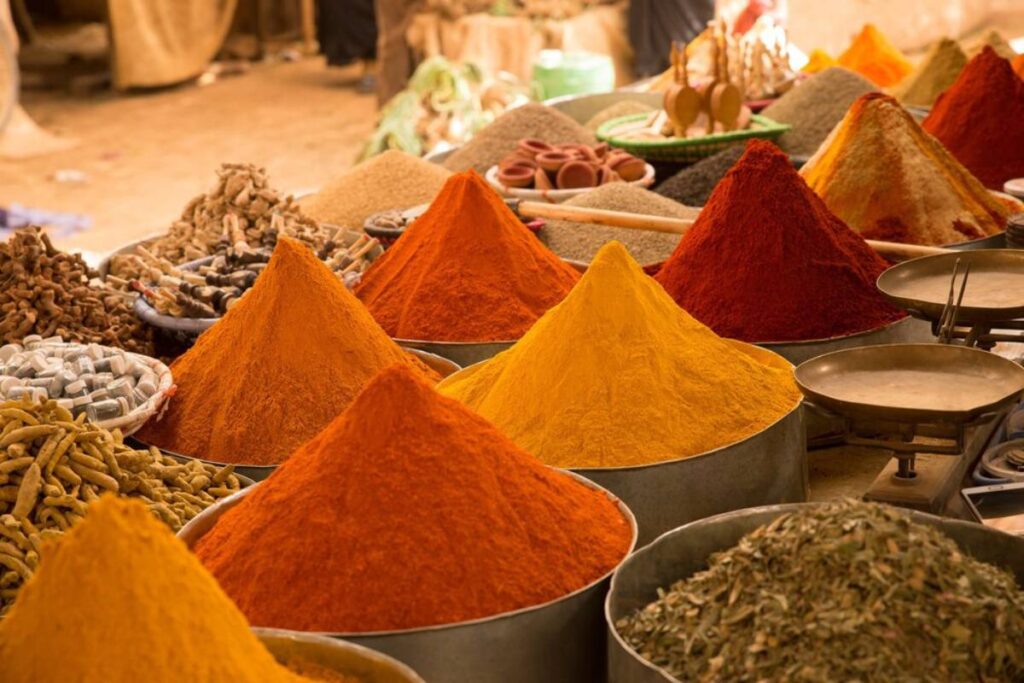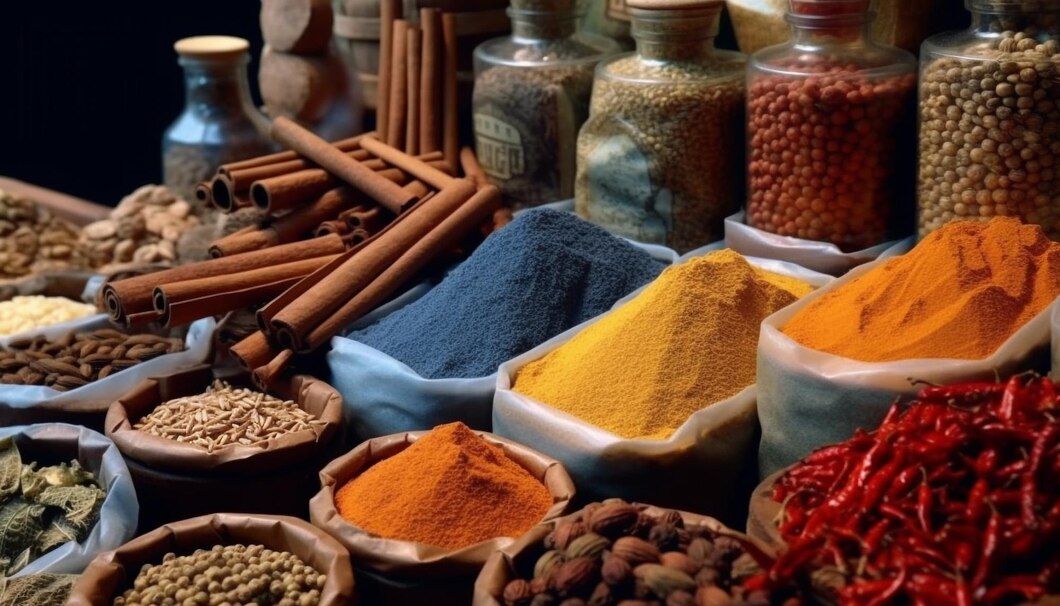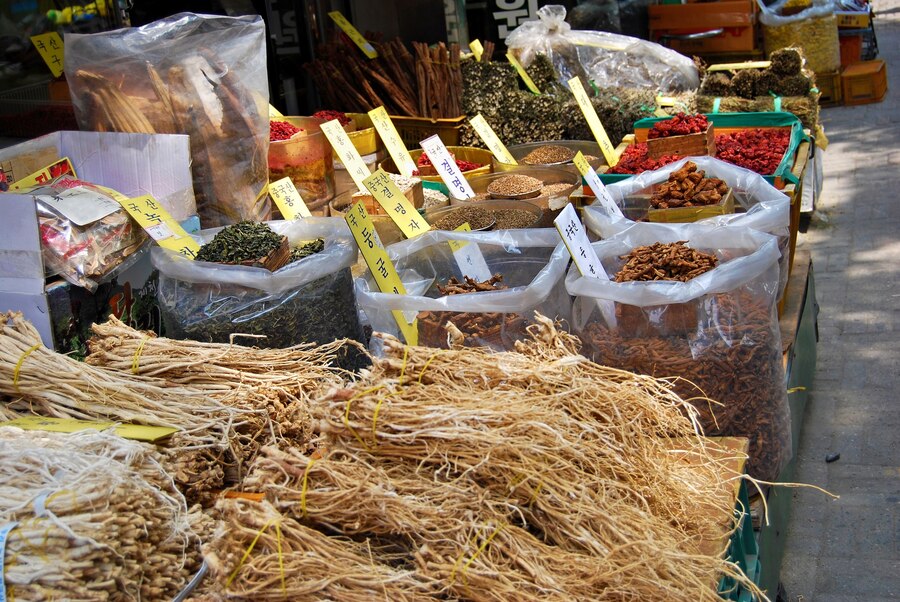The Food Blog

The Origins of Spices: How the Spice Trade Changed the World
The strong scent of cinnamon, cloves, and pepper in your spice rack is more than just a nice smell. It reminds us of how the spice trade has shaped global history. For centuries, spices were among the most valuable goods. They helped create trade routes, inspired exploration, and even caused wars.
From the ancient spice caravans of the Silk Road to the daring voyages of European explorers, the quest for spices led to the discovery of new continents and the formation of global empires. Spices transformed not only global cuisine but also economies, cultures, and politics.
In this guide, you’ll discover where spices come from. You’ll see how the spice trade grew over time. Plus, you’ll learn how it shapes our cooking and global trade today.
The Ancient Origins of Spices

Early Use of Spices in Civilisations
Long before the rise of global trade, spices were used by ancient civilisations for cooking, medicine, and rituals. Archaeological evidence reveals that humans were using spices as far back as 2000 BCE.
Spices in Ancient Cultures:
- Egypt: The ancient Egyptians used cumin, coriander, and cinnamon in their cooking and embalming practices. Traces of spices were found in the tomb of Tutankhamun, highlighting their ceremonial importance.
- India: The Indian subcontinent was a hub of spice cultivation, producing black pepper, turmeric, cardamom, and ginger, which were used in Ayurvedic medicine and cuisine.
- China: Chinese civilisations used star anise, Sichuan pepper, and cassia for culinary and medicinal purposes, trading these spices along the Silk Road.
- Mesopotamia and Persia: These ancient civilisations used coriander and saffron in food and perfumes.
The Spice Routes of the Ancient World
Before maritime trade began, spices moved overland. They passed through complex trade networks linking Asia, the Middle East, and Europe.
Key Ancient Spice Routes:
- The Silk Road: This trade route linked China, India, Persia, and the Mediterranean. It let spices like pepper, ginger, and saffron flow into Europe.
- The Incense Route: Originating in the Arabian Peninsula, this trade network transported frankincense, myrrh, and spices to the Mediterranean.
- Indian Ocean Trade: Merchants from India, Sri Lanka, and Southeast Asia shipped spices such as cloves, nutmeg, and cinnamon to the Middle East and Africa.
The Rise of the Spice Trade
The European Quest for Spices
By the Middle Ages, spices had become symbols of wealth and luxury in Europe. However, the spice trade was largely controlled by Arab and Venetian merchants, who acted as middlemen, driving up the prices. This monopoly on spices fuelled Europe’s desire to find direct sea routes to Asia.
Key Explorations Fueled by the Spice Trade:
- Marco Polo’s Journey (1271–1295): Marco Polo travelled to China and the Mongol Empire. His adventures brought Europe valuable goods from the East, like spices, silk, and other unique items.
- Vasco da Gama’s Voyage (1497–1499): The Portuguese explorer sailed around the Cape of Good Hope. He reached India, opening a direct sea route for spice trading.
- Christopher Columbus (1492): Columbus wanted a quicker way to India for spices. Instead, he found the Americas. There, he came across chilli peppers and vanilla. This discovery changed the spice trade forever.
- Ferdinand Magellan (1519–1522): Magellan’s expedition circumnavigated the globe, establishing the Spanish presence in the spice-rich Philippines.
The Spice Islands: The Heart of the Trade
The Spice Islands (now part of Indonesia’s Maluku Islands) were the epicentre of the global spice trade. For centuries, they were the only known source of nutmeg, mace, and cloves, making them extremely valuable.
Spices from the Spice Islands:
- Nutmeg: Valued for its warm, aromatic flavour and medicinal properties.
- Cloves: Prized for their pungent aroma and antiseptic properties, they are used in both food and medicine.
- Mace: Derived from the lacy covering of the nutmeg seed, used in spice blends and baked goods.
The intense competition for control over the Spice Islands led to violent conflicts between European powers, notably the Dutch and Portuguese, as they sought to dominate the trade.
The Dutch and British East India Companies
In the 17th century, the spice trade became dominated by powerful trading companies.
Dutch East India Company (VOC):
- Founded in 1602, the VOC monopolised the clove, nutmeg, and cinnamon trade.
- The Dutch waged wars against local rulers and rival European powers to maintain their dominance over the Spice Islands.
British East India Company (EIC):
- Founded in 1600, the EIC initially focused on the textile trade but later expanded into spices.
- The British eventually displaced the Dutch in India and Ceylon (Sri Lanka), gaining control over pepper and cinnamon plantations.
The Lasting Influence of the Spice Trade
Culinary Transformations
The spice trade revolutionised global cuisine, introducing new flavours and culinary techniques to different regions.
Spices That Transformed Global Cuisines:
- Chilli peppers: Brought to India, Southeast Asia, and Africa by Portuguese traders, chillies became integral to local cuisines.
- Vanilla and cacao: Introduced from Mesoamerica to Europe, transforming desserts and confectionery.
- Cinnamon and cloves: Spices once exclusive to Asia became staples in European baking and holiday dishes.
The Economic Impact of the Spice Trade
Spices were so valuable that they were referred to as “black gold.” The trade significantly shaped global economies and trade policies, contributing to the rise of colonial empires.
Key Economic Effects:
- Monopolies and trade routes: Control over the spice trade allowed European powers to amass wealth and influence.
- Colonial expansion: The race for spice-rich territories drove European colonisation of Asia, Africa, and the Americas.
- The commodification of spices: Spices became a form of currency and wealth traded for gold, silver, and goods.
Spices in Modern Cuisine and Global Trade
Spices as Culinary Staples
Today, spices that were once rare and expensive are common in everyday cooking. They have become essential in global cuisines.
Spices in the Modern Global Economy
Spices remain vital in modern trade and agriculture. The largest spice producers today include India, Indonesia, China, and Vietnam, with spices contributing billions to their economies.
Modern Spice Trends:
- Organic and sustainable spices: Consumers increasingly demand ethically sourced and organic spices.
- Speciality spice blends: Pre-mixed blends like garam masala, za’atar, and ras el hanout have gained popularity in global supermarkets.
Conclusion: The Enduring Legacy of the Spice Trade

The spice trade transformed the world, generating economies, culture, and cuisine. The search for exotic flavours opened new continents, built empires, and mixed culinary styles.
Next time you sprinkle cinnamon on your oatmeal or add pepper to your steak, think about how these once-rare spices changed history. Embrace the cultural and culinary legacy that spices bring to your table.









